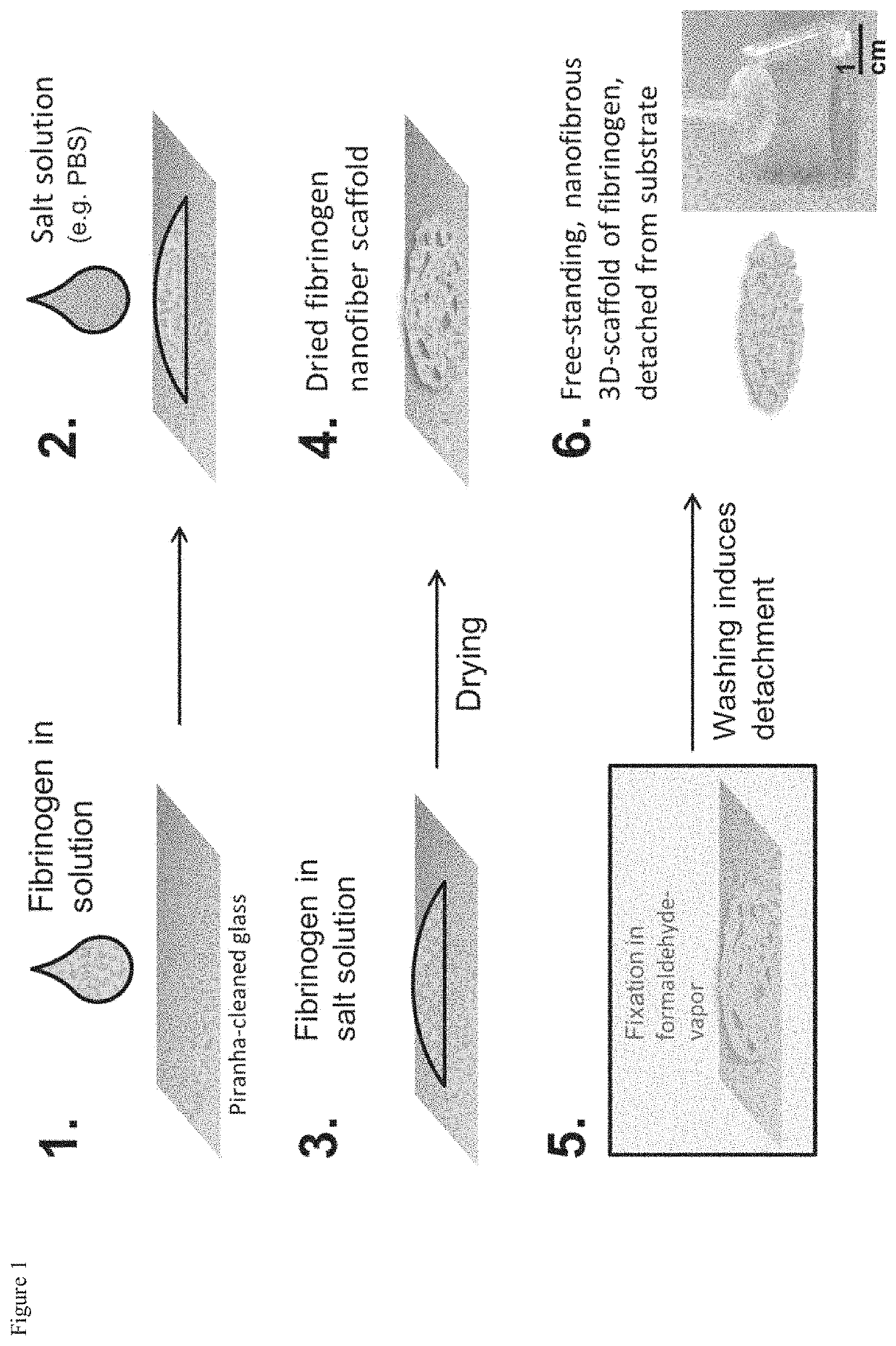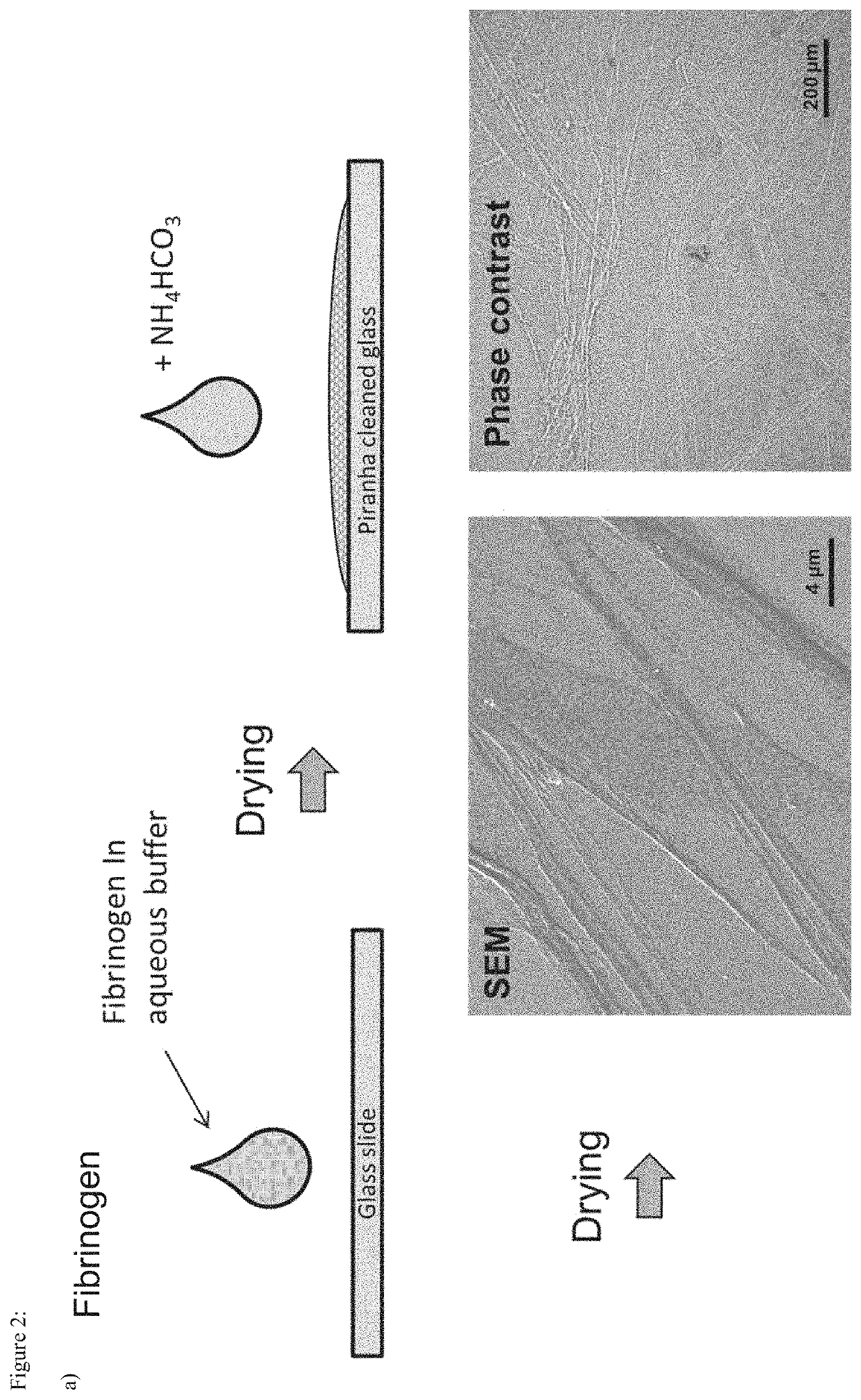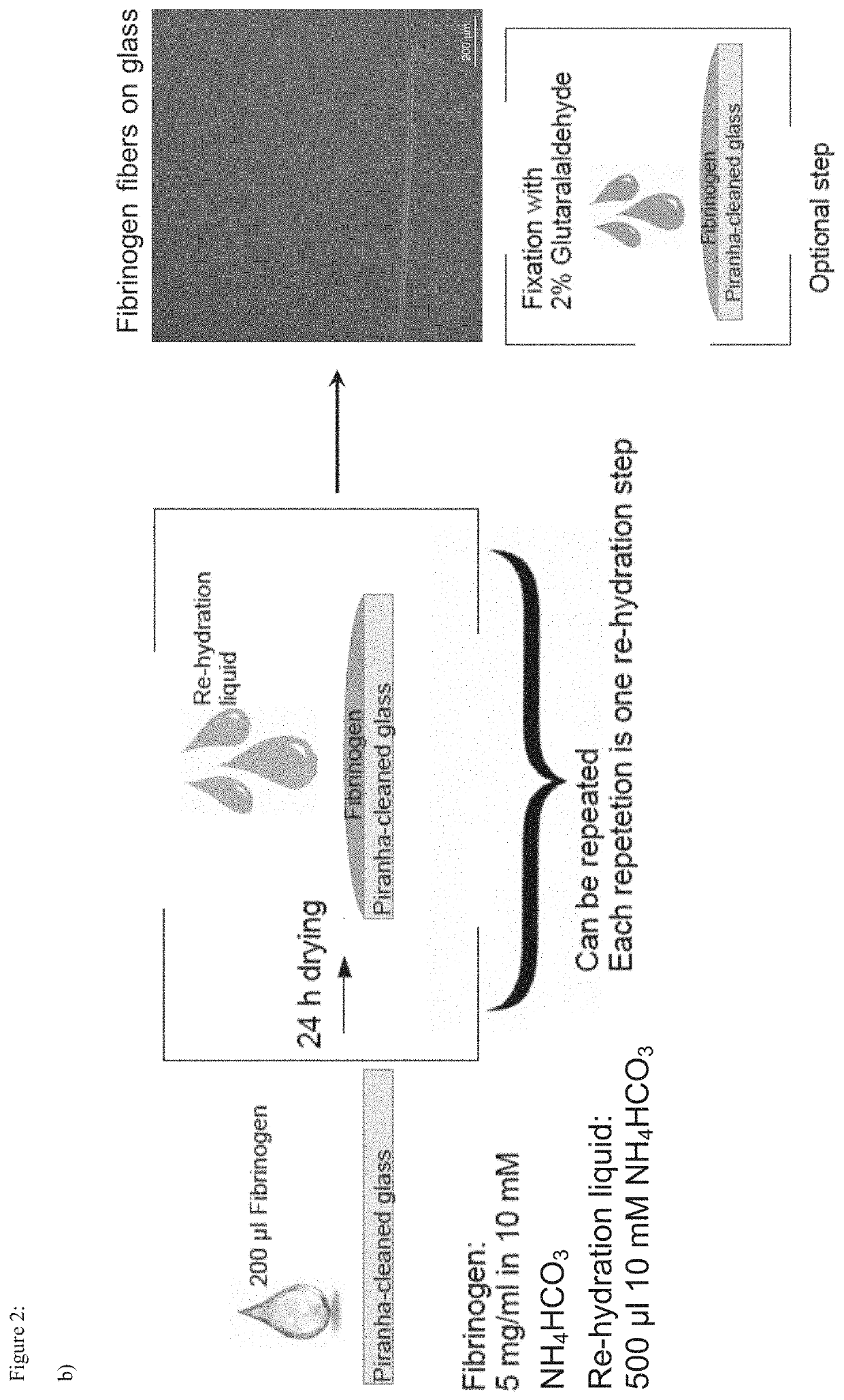Methods of production of fibrous fibrinogen scaffolds and products thereof
- Summary
- Abstract
- Description
- Claims
- Application Information
AI Technical Summary
Benefits of technology
Problems solved by technology
Method used
Image
Examples
Embodiment Construction
Preparation of Substrates and Protein Solutions
[0106]Round glass coverslips with a diameter of 15 mm (VWR, Darmstadt, Germany) and square glass slides (Gerhard Menzel GmbH, Braunschweig, Germany) were cleaned by 5 min immersion into H2SO5 (piranha solution). Piranha solution was freshly prepared by mixing 95% sulfuric acid (VWR) with 30% hydrogen peroxide solution (VWR) in a 3:1 ratio. After washing with deionized water from a TKA water purification system (Thermo Fisher Scientific, Schwerte, Germany) the activated glass coverslips were stored in deionized water and dried under nitrogen flow directly before further use. Moreover, the inventors studied the self assembly of fibrinogen on polystyrene petri dishes (Sarstedt, Numbrecht, Germany) and on glass, which was sputter-coated with a 25 nm gold layer in a Bal-Tec SCD 005 system (Leica Microsystems, Wetzlar, Germany). The inventors also analyzed fibrillogenesis of fibrinogen on glass slides, which were modified with (3-Aminopropyl)...
PUM
| Property | Measurement | Unit |
|---|---|---|
| Diameter | aaaaa | aaaaa |
| Diameter | aaaaa | aaaaa |
| Concentration | aaaaa | aaaaa |
Abstract
Description
Claims
Application Information
 Login to View More
Login to View More - R&D
- Intellectual Property
- Life Sciences
- Materials
- Tech Scout
- Unparalleled Data Quality
- Higher Quality Content
- 60% Fewer Hallucinations
Browse by: Latest US Patents, China's latest patents, Technical Efficacy Thesaurus, Application Domain, Technology Topic, Popular Technical Reports.
© 2025 PatSnap. All rights reserved.Legal|Privacy policy|Modern Slavery Act Transparency Statement|Sitemap|About US| Contact US: help@patsnap.com



